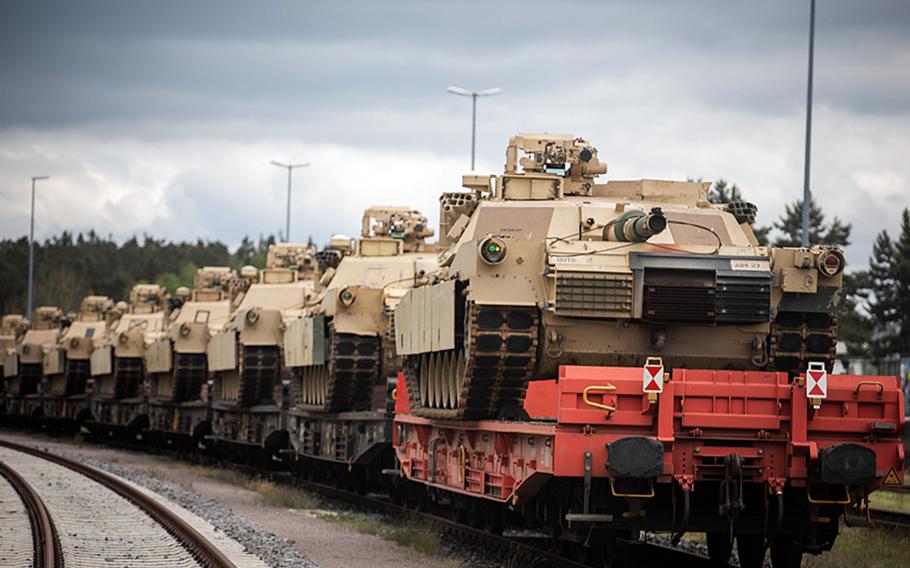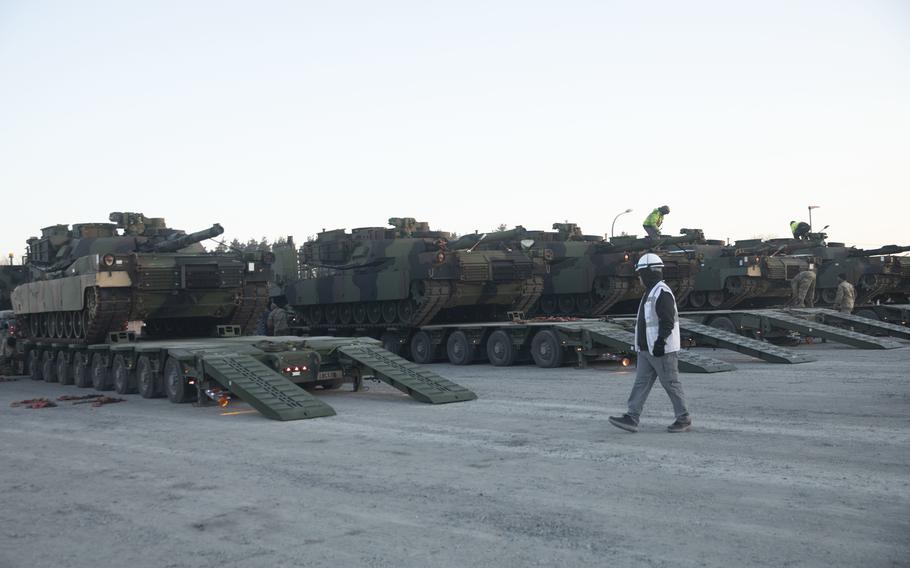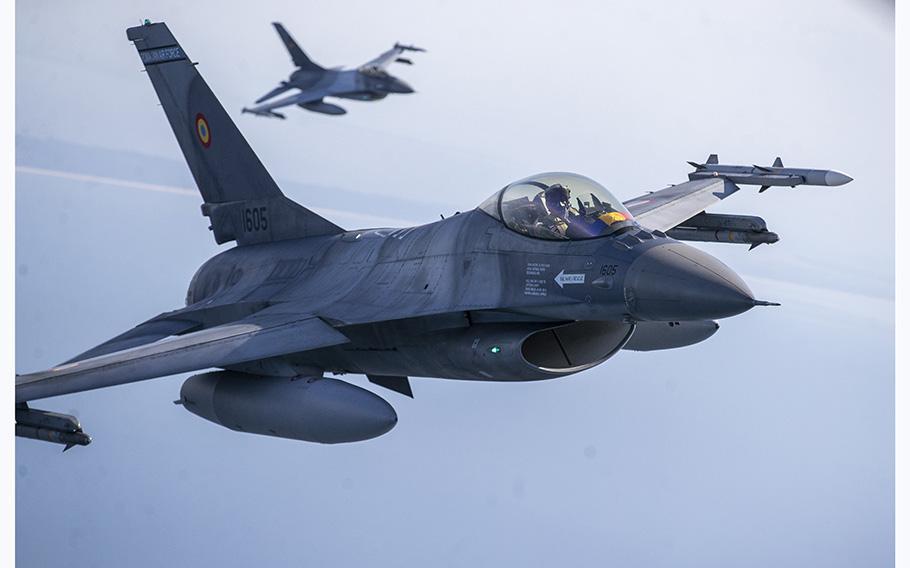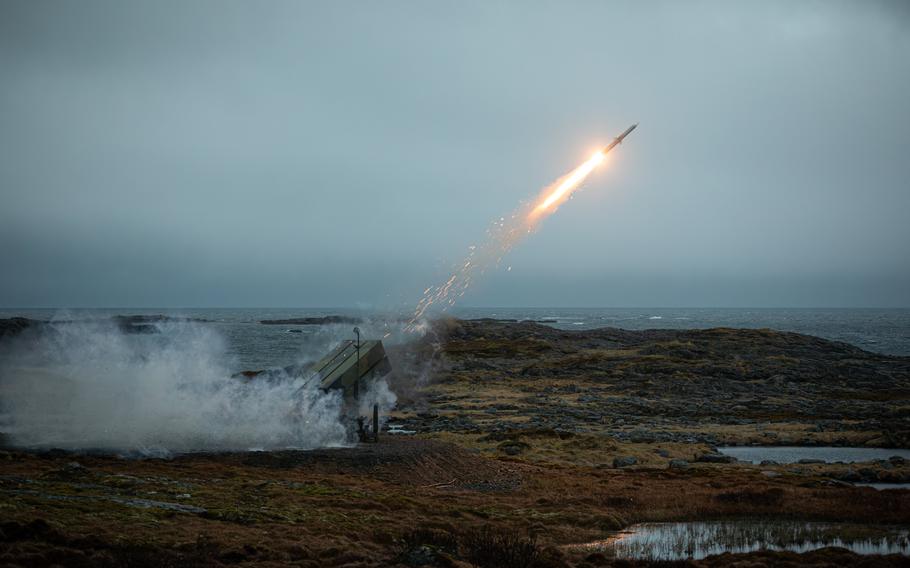
U.S. M1A1 Abrams tanks arrive at Grafenwoehr, Germany, May 12, 2023. The tanks will be used for training of Ukrainian armed forces personnel and is expected to last several weeks. Seventh Army Training Command will lead the events in Germany on behalf of U.S. Army Europe and Africa. (U.S. Army)
WASHINGTON — Defense Secretary Lloyd Austin said Thursday that more than 30 American-made M1 Abrams tanks for training Ukrainians have arrived in Europe, so they are prepared for when the battle-ready versions arrive later in the year.
“Earlier this month, 31 M1 Abrams training tanks from the United States arrived at Grafenwöhr in Germany,” Austin said at the start of a virtual meeting of the Ukraine Defense Contact Group, a collection of about 50 nations that convenes regularly to decide what equipment Ukrainian forces need to fend off invading Russian forces.
The United States is still working on sending nearly three dozen battle-ready M1 Abrams tanks in the coming months, which are being refurbished with defense contractors.
“We have been focused from the very beginning on providing Ukraine the capabilities it needs to be successful on the battlefield,” Austin said after the Ukraine group met during a news conference with Army Gen. Mark Milley, chairman of the Joint Chiefs of Staff.

Multiple M1 Abrams tanks in Grafenwöhr, Germany, in February 2022. (Elizabeth MacPherson/U.S. Army)
“Today marks the 456th day since Russia began its illegal and unprovoked invasion,” said Milley, who also attended the meeting. “Ukrainian forces continue to fight, and they’re making the Russians pay severely for every inch of Ukrainian ground.”
Earlier this year, the Pentagon committed 31 battle-ready Abrams tanks to Ukraine after contending for weeks that they were too sophisticated and too difficult to maintain to be used in its war with Russia. The tanks require regular field maintenance and typically run on jet fuel.
When Austin and Biden chose to send the M1A2 version of the tank, the most sophisticated version, it was decided to build them through the Ukraine Security Assistance Initiative — a program that procures from industry rather than pulling them from Pentagon stocks. By going through that program, it takes equipment months longer to reach Ukraine.
Defense officials originally said the final battle-ready tanks would arrive in Ukraine in late 2023 or early 2024, but the Pentagon later shaved a few months off that estimate by changing the plan and going instead with the slightly older M1A1 Abrams.
Roughly 250 Ukrainian troops will arrive in Germany this week to begin training on the tanks, according to a report by Voice of America.

Portuguese Air Force F- 16 military fighter jets participating in NATO’s Baltic Air Policing Mission operate in Lithuanian airspace, on Monday, May 22, 2023. (Mindaugas Kulbis/AP)
The meeting of the defense contact group covered some new issues, such as the recent international agreement to train Ukrainian pilots on fourth-generation fighter jets, including the U.S.-made F-16 Fighting Falcon.
Last week, President Joe Biden announced the United States will support a joint effort with allies to train the Ukrainian pilots. Austin said Thursday that the Pentagon hopes that training will begin in “the coming weeks.” The U.S. has not yet announced any specific plans, however, to send any fighter jets for use in Ukraine.
“As Russia’s invasion has evolved, so has our security assistance,” Austin said during the news conference. “That is a very lethal airspace, and so we want to focus on … the things Ukraine needs to defend itself, protect its infrastructure, protect its people.”
Milley said Russia has hundreds of fighter jets on par with the F-16, and Ukraine basically has none.
“That is the most effective way to deny air superiority to the Russians,” the general said. “If you are going to contest Russia in the air, you’re going to need a substantial amount of fourth- and fifth-generation fighters.”
Meanwhile, the State Department announced Wednesday that it has approved a possible sale of weapons and equipment including a National Advanced Surface-to-Air Missile System, or NASAMS, to Ukraine for $285 million.

Norwegian soldiers fire a National Advanced Surface-to-Air Missile System, or NASAMS from the Andøya Space Range in Andøya, Norway against a simulated threat in support of exercise Formidable Shield 2023 on May 10, 2023. (Royal Norwegian Navy)
“Ukraine has an urgent need to increase its capabilities to defend against Russian missile strikes and aircraft,” the State Department said late Wednesday in a statement. “Acquiring and effectively deploying this capability will enhance Ukraine’s ability to defend its people and protect critical national infrastructure.”
The sale of the missile system to Ukraine includes one 3D radar system, canister launchers, GPS receivers, code launchers and other elements of logistics and program support.
The principal contractor will be Raytheon Missiles and Defense and Congress has been informed of the sale by the Defense Security Cooperation Agency.
The U.S. has given nearly $37 billion in military aid to Ukraine since the Russian invasion in February 2022. The aid packages have included various weapons, air defenses, millions of munitions and ammunition rounds, armored vehicles, drone systems and field equipment.